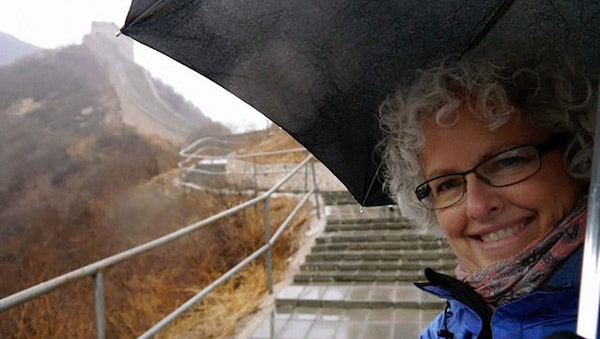
Janice Waugh, a Toronto woman who runs a travel website and is launching a guide to encourage other women to travel solo, takes a photo at the Great Wall of China.Janice Waugh/Janice Waugh
In 2005, Michelle Ponto was living in Toronto, with a job in marketing, when her newly married sister-in-law suddenly collapsed and fell into a months-long coma. The event served as a wakeup call. “She waited all her life to get married so she could travel and now she’s sick,” Ponto says. “I decided I couldn’t wait.”
Since then, Ponto, who now works in communications in Saudi Arabia, has travelled the world by herself. In just the past three months, she has visited Zanzibar, Kenya, Morocco, France, Switzerland and Hong Kong. It hasn’t all been easy. There was the time she planned a cycling tour of Ireland in the height of the rainy season, and the time she was in Kenya and heard a water buffalo snorting on the other side of her safari tent. “I remember trying my best not to breathe,” she says.
But these experiences – sometimes challenging, often exhilarating – have become defining moments in Ponto’s life. “It makes you feel really independent to do things women are supposed to be afraid of doing,” she says. “We don’t need to rely on anybody to follow our dreams any more. It’s liberating to do it by yourself.”
The idea that travelling alone can act as a tool of female empowerment and self-discovery has been growing since the publication of popular culture powerhouses such as Elizabeth Gilbert’s Eat Pray Love and Cheryl Strayed’s Wild. “It’s a uniquely 21st-century aspect of female life,” says Sarah Hepola, a Dallas-based writer working on a book about solo travel. “Women are now more comfortable travelling alone in a way they didn’t when they were really only two things: wives and mothers."
Of course, men also set off by themselves, but it is the female solo traveller that has become the dominant trope. In recent years, the trend seems to have morphed almost into a movement, with the industry responding with more women-only tours, hotel services – even a private island. So what is it that women in particular have to gain from solo adventures?
Start speaking to female travellers and it’s clear they venture out into the world for myriad reasons: to experience different cultures, try new foods, learn languages and take pictures of those perfect sunsets that seem romantic even when alone. But many are also seeking something they might not name but intuitively sense they need.
Going solo allows women to shake off the demands and expectations of others. In general, women are socialized to be hyperattuned to the needs of those we love – sometimes at the expense of our own fulfillment. “When you travel alone, you have the opportunity to recharge your batteries away from those at home who rely on you for emotional and mental support,” says Oneika Raymond, a Travel Channel host originally from Toronto.
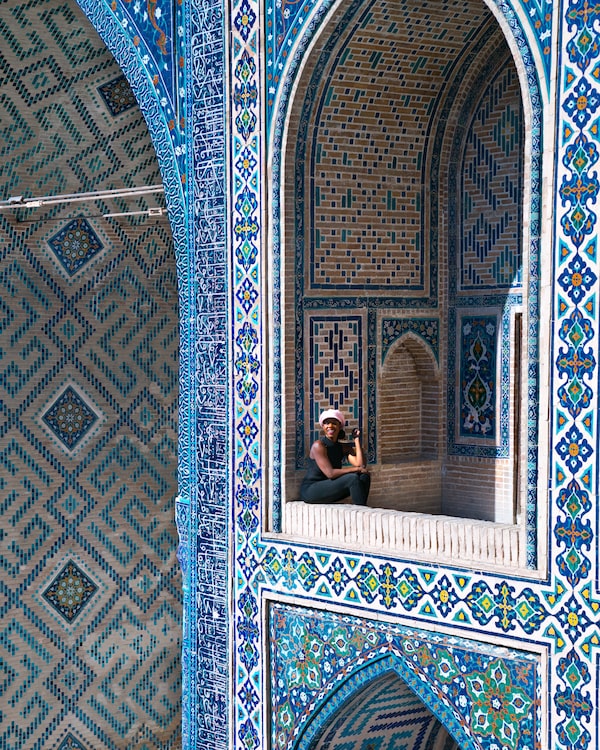
Oneika Raymond travelling in Uzbekistan.ONEIKA RAYMOND/Handout
Jennifer Haddow, owner of Newfoundland-based Wild Women Expeditions, which offers nature-intensive excursions for women, says that many of her guests are tired of constantly juggling work hassles, family demands and more. “They want some space to feel the truth of who they are again.”
For some women, that first solo experience is a big push out of their comfort zone – and many find navigating the associated challenges terrifically rewarding. “It’s a huge test of fortitude,” Hepola says. “It’s an opportunity to learn and I became less afraid of the unknown, less afraid of being alone and less afraid of finding my way out of places where I was stuck.”
Janice Waugh’s husband died when she was 49, and she ventured out on her own two years later. “The first 24 hours were a disaster,” says Waugh, who lives in Toronto. She arrived in Havana after dark to find that her hotel was on a pedestrian street her taxi couldn’t access. She found the hotel but her room had no window, she didn’t like the food and she struggled with Cuba’s multiple currencies. “I called and asked my travel agent to move me into a resort but she never called back,” she recalls. “And it was the best thing that she didn’t because I really found my feet.”
Waugh now runs solotravelerworld.com and is launching a guide to encourage other women to take the solo travel plunge. “You get to discover who you are when no one’s looking, when no one else is defining you or imposing expectations on you.”
In July, Travelzoo’s first-ever Female Solo Travel Report found that 70 per cent of Canadian women were likely to take a solo trip in the future. This new wave reflects changes at both ends of the demographic spectrum, from an increasing number of uncoupled women in their 20s, 30s and 40s to a rising “silver divorce” rate among women in their 50s, 60s and 70s.
But it is not just single women who travel alone. According to Erica Wilson, associate professor of business and tourism at Southern Cross University in Sydney, Australia, the empowerment narrative is key at all stages of life. “Women over 40 have a desire for independence and a sense of achievement,” says Wilson, who co-edited Women and Travel: Historical and Contemporary Perspectives. “Younger women feel like it’s a rite of passage; they want to do this before settling down.”
For Raymond, that first solo trip was a matter of circumstance. She was 25 and working in Monterrey, Mexico, in 2007 when she decided to visit Zacatecas, a mining city. “My friends already had plans and I didn’t want to miss out on seeing the world because I didn’t have someone to do it with."
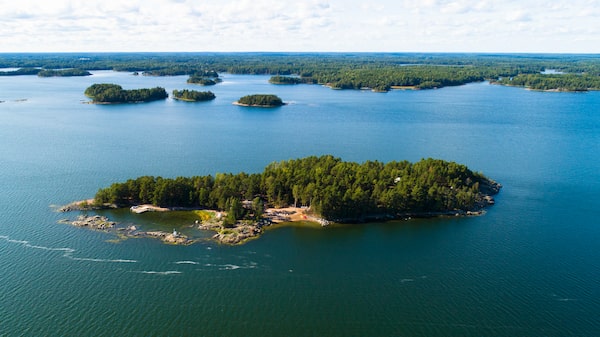
SuperShe is a female-only luxury retreat with a rich-kid summer-camp vibe on a private island off the coast of Finland.SuperShe
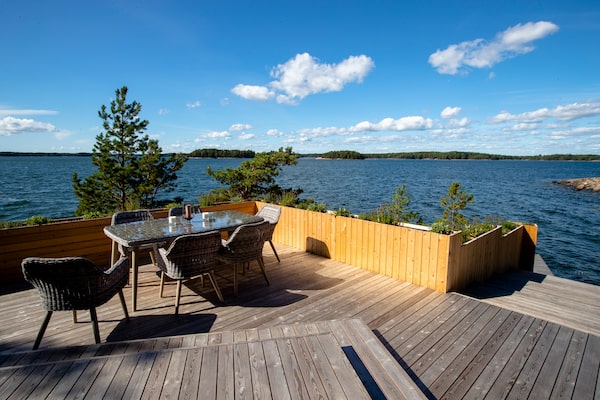
The idea that travelling alone can act as a tool of female empowerment and self-discovery has been growing since the publication of popular culture powerhouses such as Elizabeth Gilbert’s Eat Pray Love and Cheryl Strayed’s Wild.Catherine Aeppel/SuperShe
Raymond hopped on a bus and spent the weekend in Zacatecas hanging out with two Mexican sisters she met at her hostel and visiting local markets filled with silver and semi-precious stones. A love of solo travel took hold. “I get to do what I want, when I want and I don’t have to cater to someone else’s needs, desires, budget or timeline,” she explains.
According to tour operator Intrepid, female solo-traveller bookings in Canada have increased 45 per cent since 2016. Of course they – and other industry players – are happy to respond to the growing trend. In March, the company launched female-only departures to Morocco, Iran and Jordan, noting that “women are feeling more empowered than ever and we wanted to be a part of that.” On International Women’s Day, Trafalgar Tours launched the social media campaign #SheGoes, highlighting inspirational itineraries such as India (“She Goes to Reflect”) and Costa Rica (“She Goes to Escape”).
Hotels are jumping on board, too. In June, SuperShe – a female-only luxury retreat with a rich-kid summer-camp vibe on a private island off the coast of Finland – opened to bring women together and allow them to relax without men. And St. Giles hotel group recently launched a “Go Solo, Go St. Giles” program – with incentives for women, including a dedicated concierge service and microsite with travel tips – at their properties in New York, London, Sydney and Penang.
“Solo travel is freeing and confidence-building,” says Abigail Tan-Giroud, the company’s chief executive and a frequent traveller herself.
“It makes women feel like the world is their oyster.”
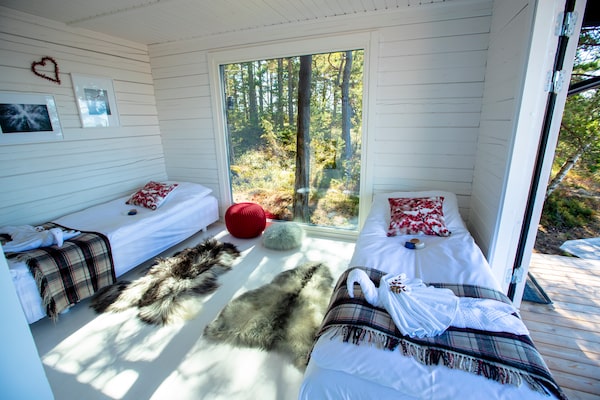
SuperShe opened to bring women together and allow them to relax without men.Catherine Aeppel/SuperShe